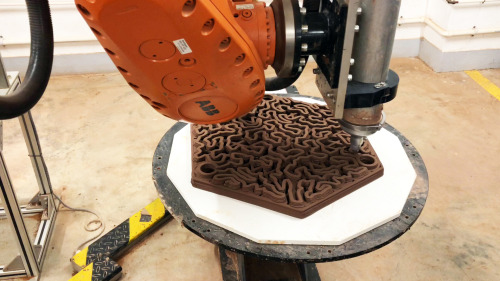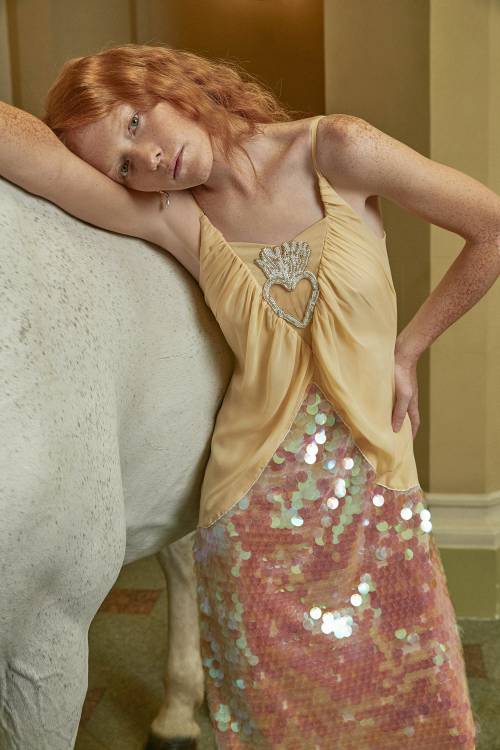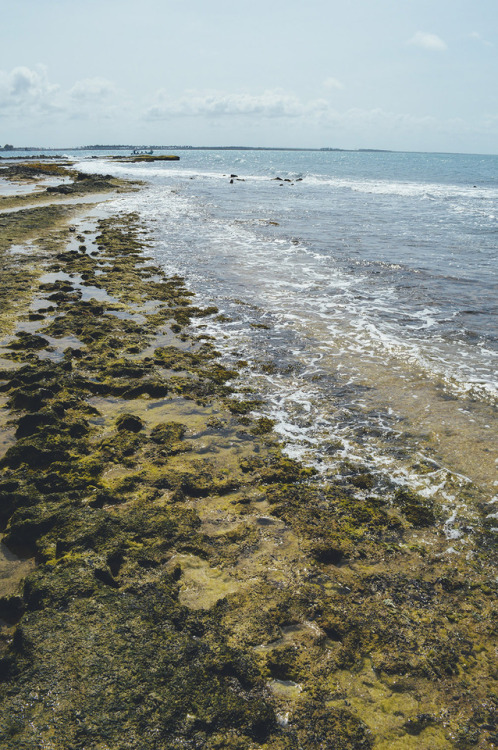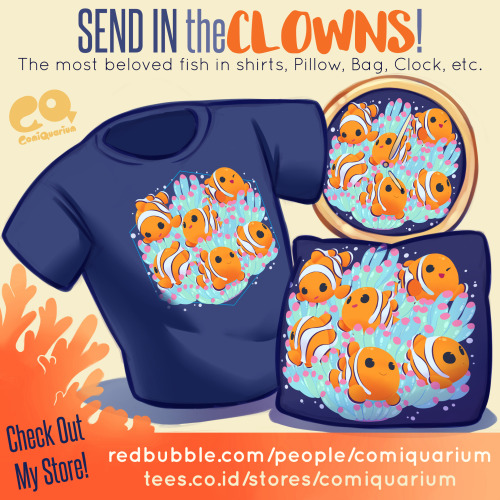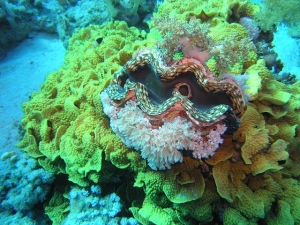#corals
3D-printed clay tiles designed to restore coral reefs
Architects and marine scientists at the University of Hong Kong (HKU) have jointly developed a novel method for coral restoration making use of specially designed 3D printed artificial ‘reef tiles’ for attachment by corals to enhance their chance of survival in the Hoi Ha Wan Marine Park in Hong Kong waters.
The artificial reef tiles are specially designed to aid coral restoration by providing a structurally complex foundation for coral attachment and to prevent sedimentation, one of the major threats to corals. They provide anchors for corals of opportunity, i.e. dislodged coral fragments that are unlikely to survive on their own, giving them a second chance to thrive.
The 128 pieces of reef tile with a diameter of 600mm were printed through a robotic 3D clay printing method with generic terracotta clay and then fired at 1125 degrees Celsius. The design was inspired by the patterns typical to corals and integrated several performative aspects addressing the specific conditions in Hong Kong waters.In addition to the novel design of the tiles, the materials used are more eco-friendly than the conventional use of concrete and metal. The tiles were printed in clay and then hardened to terracotta (ceramic) in a kiln. The team plans to expand their collaboration to new designs with additional functions for seabed restoration in the region.
Read more at newatlas.comor check the source for University of HK press release
Post link
Alena Akhmadullina Spring 2019 RTW
An outfit for the siren Sh'eenaz, from the short story A Little Sacrifice
Post link

She finally found a suitable house!!
#Interesting little #fossilcluster I picked up recently here in #centralkentucky
#coral #corals #coralfossil #coralfossils #fossilizedcoral #fossilizedcorals #paleontology #fossilclusters #fossilcollecting #fossilhunting #fossilhunter #rockhound #rockhounds #rockhounders #rockhounder #rockhounding #bryzoancoral #bryzoanfossil #bryzoanfossils #fossilizedbryzoan #ancientsealife #ancientoceansofcentralkentucky #allaroundrockhoundds #geodesandmore #geology #unitedstates #usa (at Kentucky)
https://www.instagram.com/p/COm1A77BZuH/?igshid=hc6lz4wbj4lc
Post link
SEND IN the CLOWNS!!!
Ho yeah! One of the most iconic and popular fish can now be worn as your shirt, on a pillow, on a clock, a laptop case, phone case, and many more!!!
Absolute adorable-ness drawn and designed by ComiQuarium
Just click here -> www.redbubble.com/people/comiquarium
Post link
Merry Christmas everyone!
From ComiQuarium, to you all (especially the fellow fish lovers out there)
Post link
Butterflyfish, the elegant dancers of the reef.
Featured here are longnose butterflyfish and pyramid butterflyfish
Post link
This is but a few of the many species of corals I’ve made for my instagram series.
Corals are important member of the reef ecosystem.
They are not plants despite their similarity, they are actually invertebrates related to jellyfish. Corals DO photosynthesize - in a way, because their body hosts single celled algae called zooxanthellae which also gives them their brilliant color.
They’re called soft corals, because their body is just soft tissue that expands as they fill it with water.
Post link
In a study published in the journal Global Biogeochemical Cycles on May 2, 2016, scientists from the University of Miami (UM) Rosenstiel School of Marine and Atmospheric Science found that the limestone that forms the foundation of coral reefs along the Florida Reef Tract is dissolving at a very rapid rate during the fall and winter months on many reefs in the Florida Keys. The research also showed that the upper Florida Keys were the most impacted by the annual loss of reef.
For this study Dr. Chris Langdon and his team collected water samples in 2009 and 2010 along a 124-mile (200-kilometer) stretch of the Florida reef, from north of Biscayne Bay to the Looe Key National Marine Sanctuary in the Atlantic Ocean, about five miles off Big Pine Key in the Lower Keys. This data establishes a baseline of the health of the reefs, which could then be used for future studies that look at changes along the reef tract.
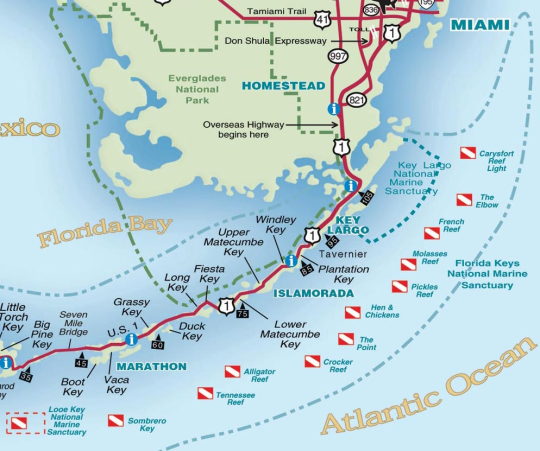
(Map of the study area. Click here to enlarge.)
The team found that reef dissolution in the fall and winter months is a significant problem on reefs in the upper Keys, where the loss of limestone is exceeding the amount the corals are able to produce in the spring and summer on an annual basis. The northern-most reef is already net erosional (-1.1 ± 0.4 kg CaCO3 m-2 y-1) and mid-reefs to the south were net depositional on an annual basis (0.4 ± 0.1 kg CaCO3 m-2 y-1) but erosional during the fall and winter. Only the two southern-most reefs were net depositional year-round.
“The reef needs a certain amount of carbonite production every year to stay in place,” Landgon says.“if it’s in excess of that, the reefs grow. When it reaches zero, they are holding even. When it switches to negative, that’s when they start wasting away.”
On top of supporting most of the biodiversity in the oceans, coral reefs are also crucial for the economies and tourism industries of coastal countries. In Florida, it is estimated that the reefs have an asset value of $7.6 billion, and they support over 70,000 jobs.
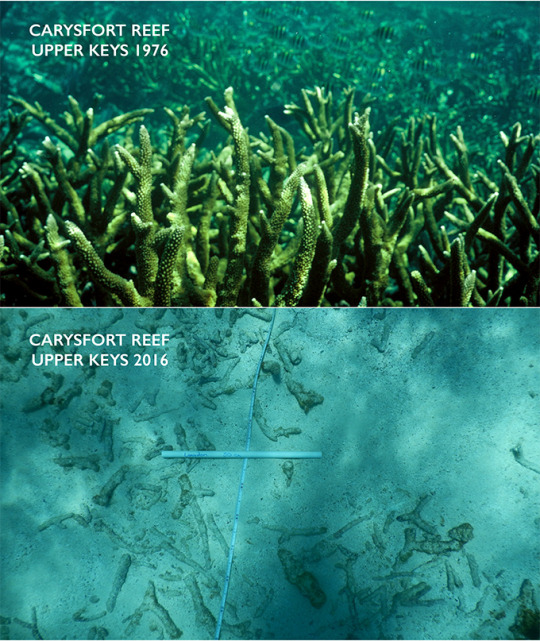
(The thickets of staghorn corals (A. cervicornis) are gone today replaced by a structure-less bottom littered with the decaying skeletons of staghorn coral. Photo by Chris Langdon)
The results of this study indicate that parts of the Florida Reef Tract have already crossed the tipping point for carbonate production and other parts are getting close. Moreover, the area has suffered greatly over the last few years due to warmer sea surface temperatures, and heavy coral bleaching episodes that resulted in a significant loss of corals and in the spread of diseases.
Since the data for the study were collected in 2009 and 2010, it is now necessary to conduct a similar analysis to see how the reefs are faring today. Considering that the worst bleaching years on record in the Florida Keys were 2014-2015, it is very possible that the reefs are in a worse state nowadays.
Purple fungus, 2019
A bit of #growth on a tin can.
Moody colors on this one.
Added three blue fungus beetles (gibbifer californicus), who eat fungus. How fitting!
…
www.petitplat.fr
.
.
.
#art #sculpturecontemporaine #artcontemporain #contemporaryart #contemporarysculpture #sculpture #growth #discardedobjects #recycled #repurposed #mushroomart #corals #coralreef #tincan #thisiscolossal #colossal #nature #biodiversity
https://www.instagram.com/p/Bsf9VW4heeb/?utm_source=ig_tumblr_share&igshid=21b22xe9kdaf
The Coral Garden explains why recent news of coral bleaching is bad news. This should be a warning sign that we need to demand climate action.
Giant Clams: Unsung Heroes for Coral
By: Brian Stallard
Giant clams have been a hard-to-miss part of coral reef ecosystems for the greater part of the last 38 million years. However, experts will be quick to admit that the part they play in these incredible systems remains rather shrouded in mystery. Now a new study hopes to pull back the veil and further our understanding of these clam colossi. (Photo : Flickr: BBM Explorer – Rob)
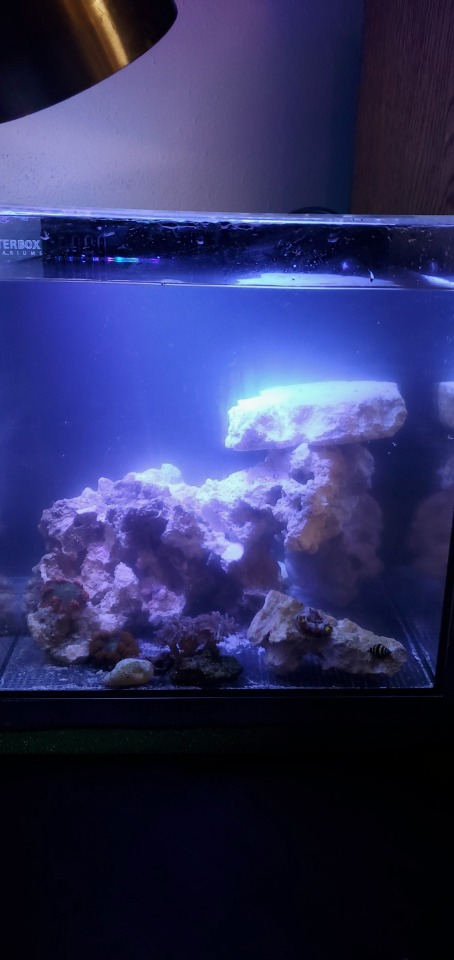
Pico ja-tank? I still love the jar, but it’s so hard to scape! The 1 gallon has better dimensions, but is such a small volume of water that I really didn’t want to try it, but the 2.5 gallon was ridiculously tall and it’s hard to place corals on a completely vertical rock structure. Remember that my gf works at a saltwater store? She was able to snag this discontinued 4 gallon waterbox. Literally has almost the same dimensions as the jar, but because it’s a box, a lot easier to scape and get hands in and out of. We made a lid out of acrylic we had and my gf added silicone to create a lip for the lid to stay in place.
It’s still going to be a zoanthid/rock nem tank and it’s only other inhabits are a scarlet hermit, 2 bumblebee snails, 6 pom pom crabs and a porcelain anemone crab (who seems to hate anemones because he won’t stay near any of the 3 that are in there). The rock is a mixture of live rock from the invert QT and some dry rock.
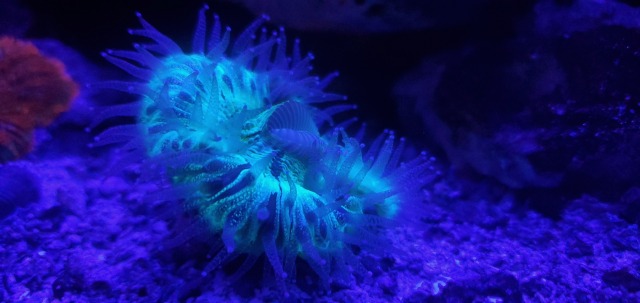
Love photographing this trachyphyllia. It’s got such an intense feeding response. Check out how the mouth actually appears to have lips. We’ve had 4 trachys and none of the other 3 ever came close to this.



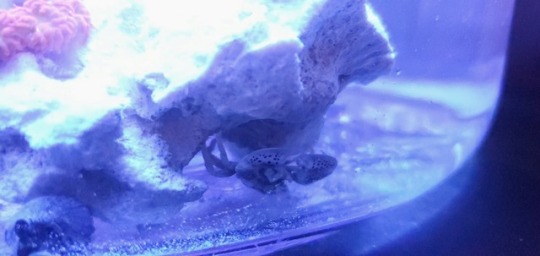

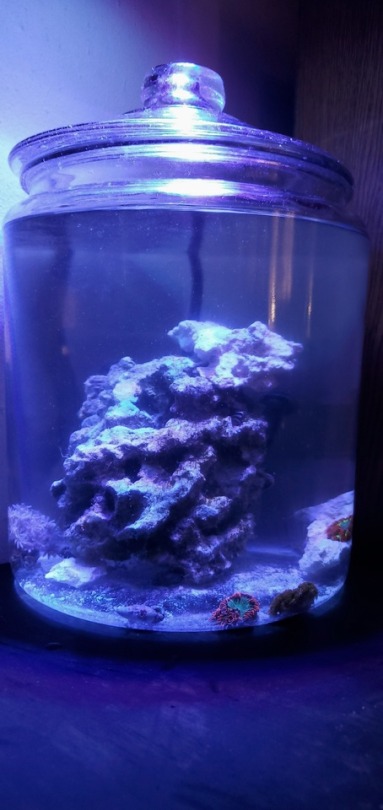
Pico jar! The first resident was added yesterday, it’s a blue banded coral shrimp. His name is Terry 2 because Terry 1 was killed by the six line (we think). Unfortunately, he molted this AM, lost both of his big claws and somehow landed onto the new rock anemone. I didn’t even notice when I was taking the picture, but quickly tried to save him and am now floating in into the coral QT where he can hopefully bounce back.
I messed with the scape quite a bit after adding the new residents today and I think from the first to the last photo, it looks better. New residents are a bumble bee snail, 3 Mexican cerith snails, a scarlet hermit crab, 3 rock flower anemones, a pom pom crab and a porcelain anemone crab! I will probably add the zoas tomorrow and do a water change…and leave the jar behind for a pico tank, the jar is already a pain in the ass! In the meantime, enjoy some back and front views of the soon to be over reef jar.




My favorite favia, gf’s favorite micromussa lordhowensis (formerly known as acans), the thriving rhodactis and a super cool trachyphyllia that has changed color beautifully. Bonus berries shrimp!
Major Tank Updates
Folks, the time has come. I made this post on my mobile and accidentally deleted what took 2-3 hrs to do on the phone. In any case, now I can give a more complete update. It’s going to be long and there’s lots of pics, so I’m putting this one under a cut.
The main display has been sitting relatively empty in terms of invert life. The display wasn’t receiving the love it deserved and we lost all of our corals except for a rhodactis mushroom that is THRIVING. It’s the biggest rhodactis I’ve ever seen and it’s gorgeous, I’m glad it’s been so resilient. The rocks have been overtaken by nuisance algae and our meager clean up crew was just too small. Despite the display not looking so great, lots of corals were on standby in the coral QT.

So for coral QT, everything gets dipped and then everything lives in this tank for a minimum of 45 days, but usually for a full 72 because those are the respective life cycles of velvet and the most resilient type of ich. If you want to know more about that, ask me and I’ll do a post about it. Where was I? Oh yeah, so QT was obviously pretty stacked at this point some of these corals had been in there since November. The obvious solution is to move the corals into the DT, but what about all that nuisance algae? Well, a new CUC was thrown into a separate QT. The new CUC was made up of nassarius and turban snails, and halloween and red scarlet hermits. Originally they were up with the corals, but they pushed lots of corals around and into each other, so they were put into their own 10 gallon QT. Unfortunately, a lot of them didn’t make it through the QT despite our efforts to keep them fed. Not sure if this was because they came to us in poor condition (totally possible) or if they starved even though we were feeding daily.
While the CUC was in QT, there was lots of debate and studying on how we were going to tackle this algae issue.

This picture actually doesn’t capture it, but every exposed surface of rock had algae on it and this is after trying a regimen of Dr. Tim’s Re-Fresh and Waste-Away. The other issue that you may or may not have been able to discern is that this rock work would not have supported all of those corals sitting in QT. We loved the look of this scape, but to accommodate all of our lower light corals, we needed to adjust the rocks. Thus beginning the great re-scape project. My gf and I were up until 5 in the morning, catching fish and placing them in a cooler, removing rock and putting them in bins of water, scrubbing them down and finally re-scaping the tank.

Even though we liked the old scape better, these new shelves and overhangs allow us a lot more room for our lower light corals and will make it easier to place corals pretty much anywhere without too much effort. The following day, I got to acclimate the new CUC and put them in the tank.

An unexpected side effect of this change in rock work is that some of our fish that were limited to a specific area of the tank or were more hidden, have come out more! It’s pretty great to see that the fish are also benefiting from this big change. Then the super exciting part came, corals were dipped and then moved into the DT!


Gf was able to procure a few other pieces of rock that were also added, mainly the shelf in the middle and another rock on the top left corner.

Pi-cooooooooooooo ja-aaaaaaaaaaaar! I’m monitoring the temp for the next 24 - 48 hrs. I’m hoping that between the small pump and an air conditioner that is literally never adjusted, the temp will stay relatively stable. So right now, the jar just has a pump, the light and a seneye that will monitor the temp. What’s cool about the seneye, is that not only will it let me know what the temp has been at, it also has a built in par reader and I was able to determine that the light would be pretty much perfect for my purposes. I have a lot of work to do today between my actual job and the house, but I hope I can get a scape made today. I definitely want to create something that I can completely pull from the tank if I need to for deep cleaning. I did just realize that I’m going to MD next weekend and so… maybe I’ll throw some chaeto or other macro algae in there until I get back. Next post (possibly later today) will be a big display tank update! So excited to share what the tank looks like now, it’s a huge change!


